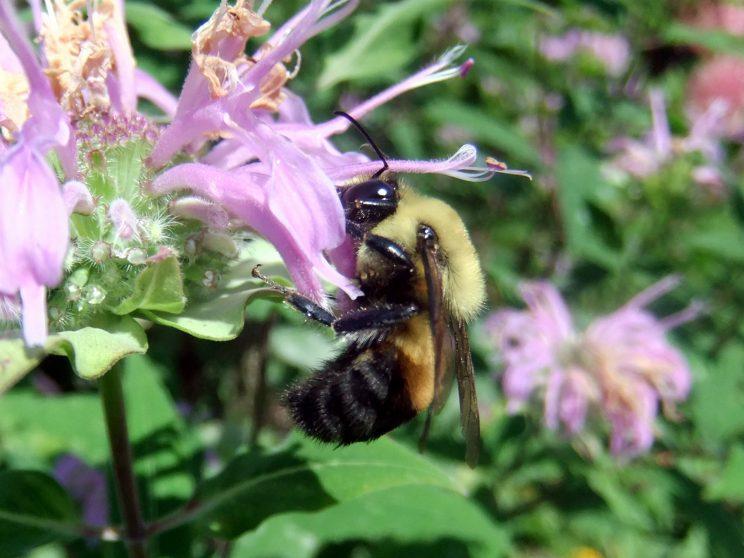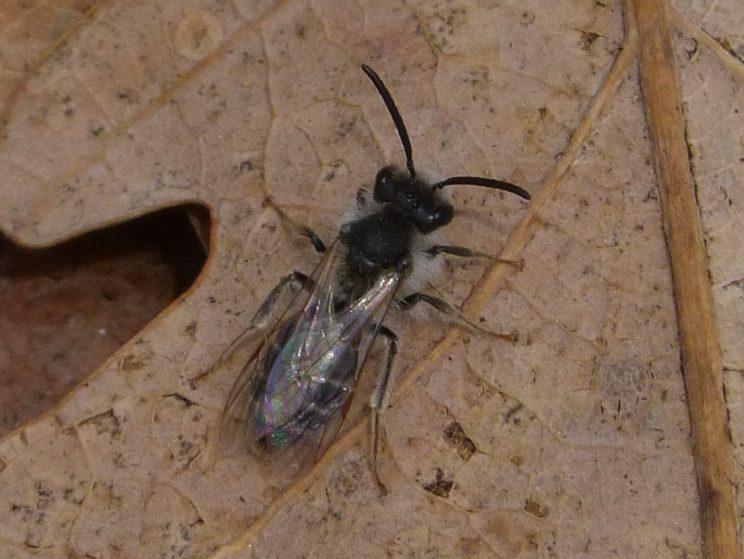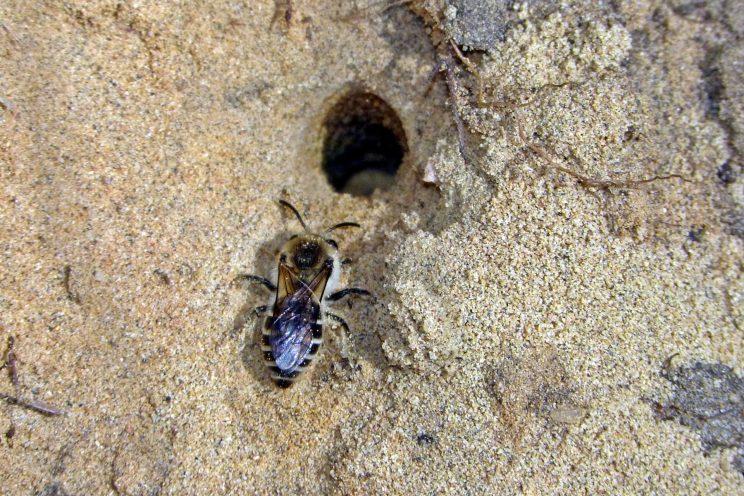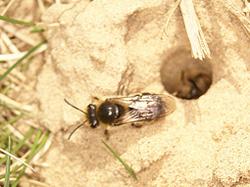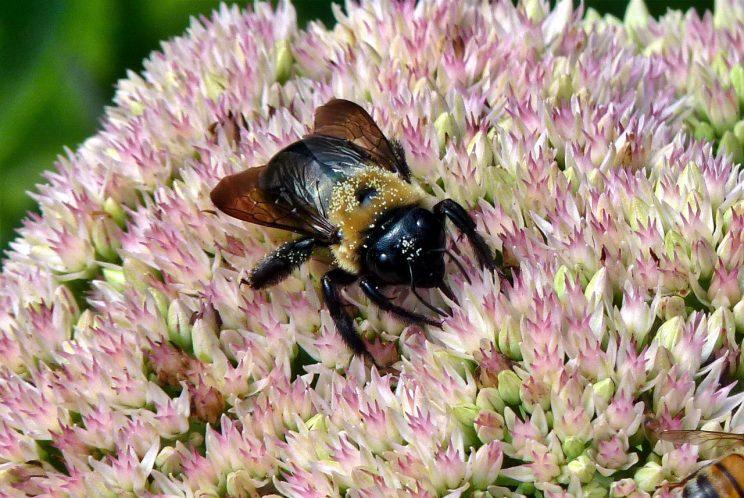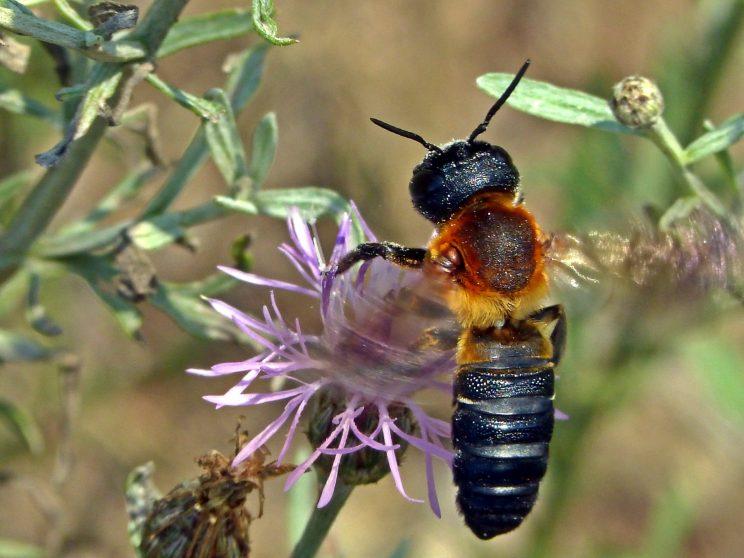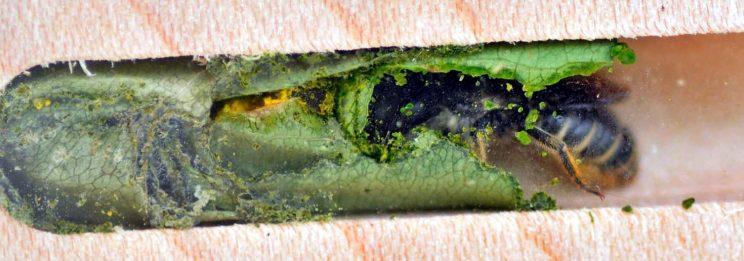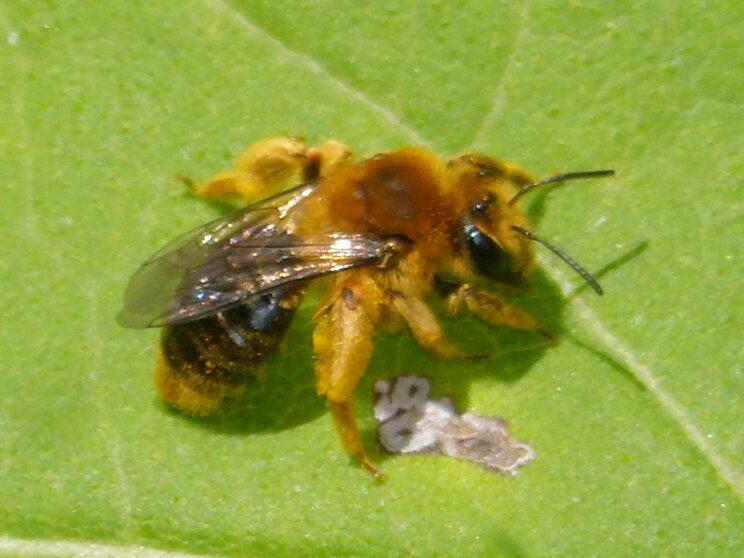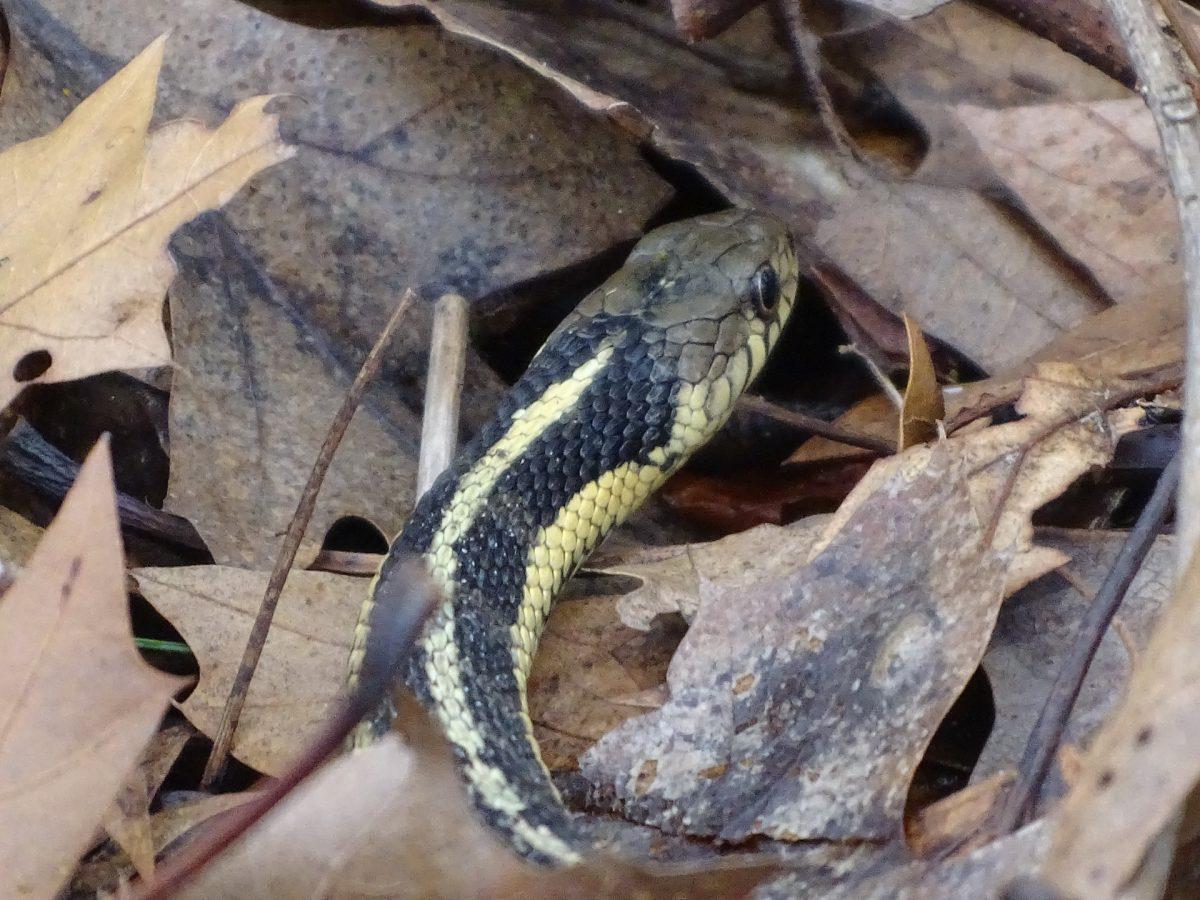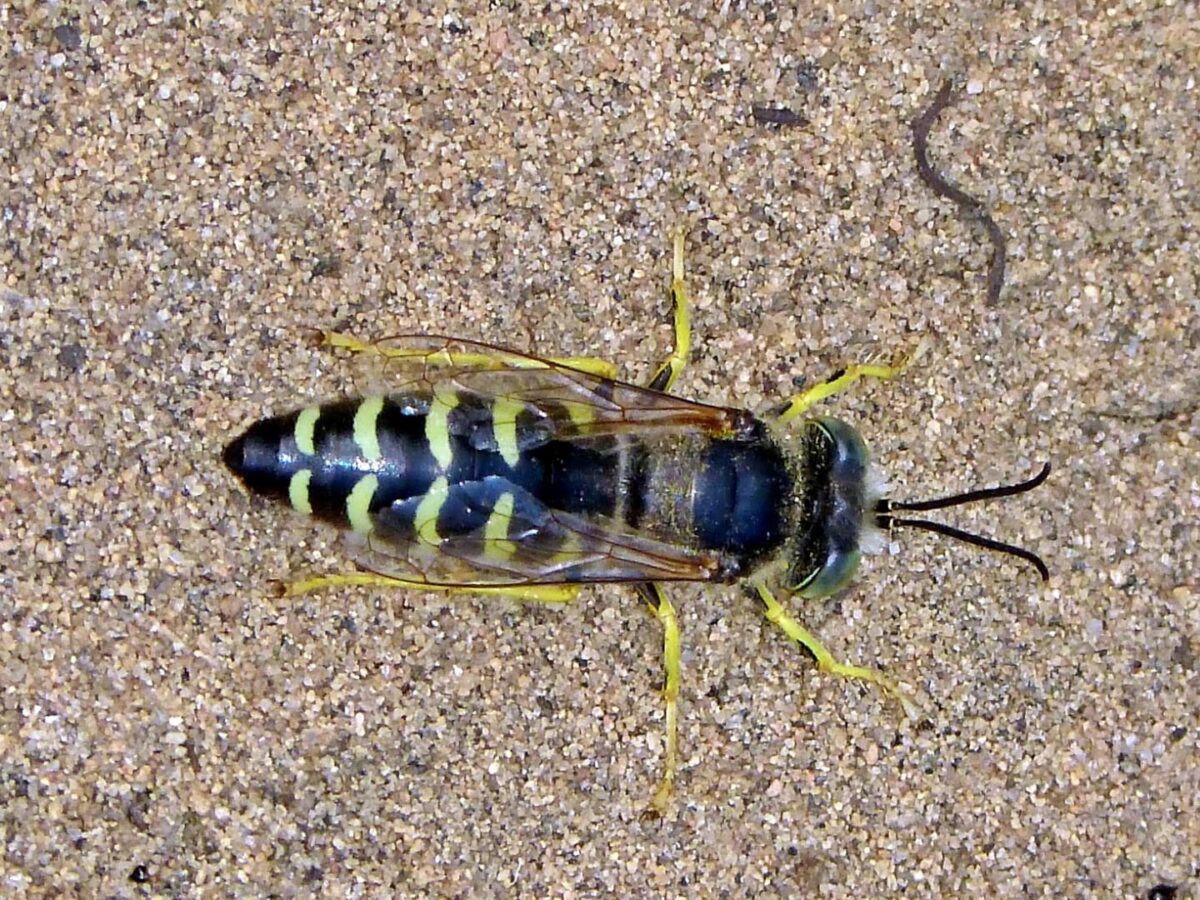by High Park Nature
High Park's black oak savannah provides ideal conditions for a diversity of bees. The sandy soil – exposed to the sun's warming rays – and the abundant prairie flowers provide ideal nesting habitat and floral resources. The savannah's woodier vegetation also provides nesting sites for species that nest in hollowed cavities.
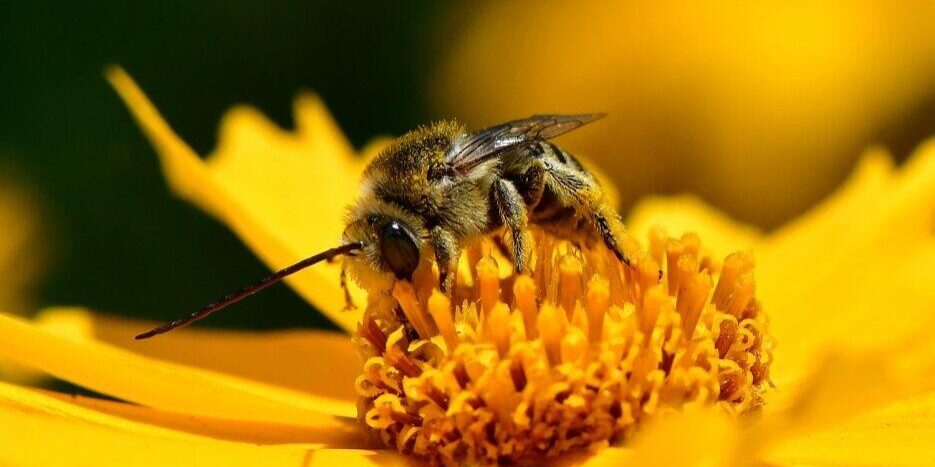
Bumble Bees of High Park
A Wildlife Preservation Canada Team surveyed High Park in August 2012 and observed the following Bumble Bee Species in High Park:
- Red-belted Bumble Bee Bombus rufocinctus
- Common Eastern Bumble Bee Bombus impatiens
- Two-spotted Bumble Bee Bombus bimaculatus
- Confusing Bumble Bee Bombus perplexus
- Brown-belted Bumble Bee Bombus griseocollis
Ground-nesting Bees
In High Park there is a fairly large aggregation of ground-nesting bees (Colletes) – an elementary school's "Tickle Bees", so named for the way they feel when they land on your skin. These are spring ground nesters, with perhaps 4,000 - 10,000 bees on one east-facing sandy hill, and of course many smaller groups of nesting sites throughout the oak savannah and woodlands. They are out in April and May.
These are solitary bees which don't have one large communal nest, although they dig tunnels next to one another. Each female provisions her own nest, which is a single tunnel in the sand, often at places where a path or other dip in the soil makes an exposed bank.
These cute little bees don't sting even if you sit right in the middle of them. They are quite an exquisite phenomena to watch and listen to, as you can see and hear at "Resonating Bodies" from artists Sarah Peebles and Stephen Humphrey!
Pollinator Garden Project
by Dr. Clement Kent and Sarah Peebles
There are many native pollinators in Toronto most people don't know about, and lots of them are found in the park! The Parkdale and Toronto Horticultural Societies help with the old-fashioned garden in Colborne Lodge, and their Pollinator Gardens Project has made a pollinator garden right in the park (see map) where you can see native plants and native pollinators together.
Sources
See also
- Gardens in High Park
-
Keeping the Bees: Why All Bees Are at Risk and What We Can Do to Save Them
-
CBC radio program - Listen to this program aired on Ideas: Dancing in the Dark - The Intelligence of Bees
-
A Landowner's Guide to Conserving Native Pollinators in Ontario, by Susan Chan, 2012
-
Pollinator Partnership books including Identification Guide for Bumblebees of the Eastern US
-
Pilot Study Finds Plants Sold As ‘Bee Friendly’ Pretreated With Pesticides



